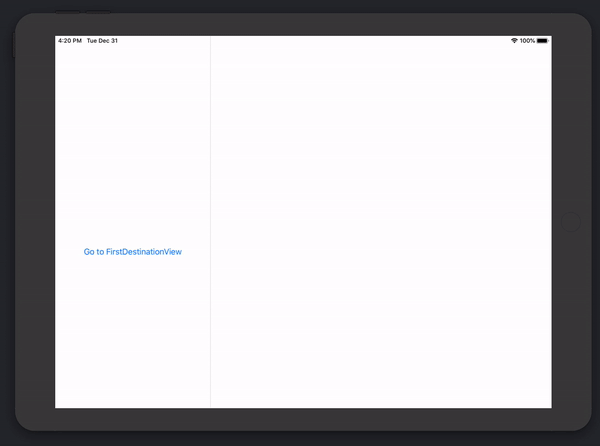I am having some issues with a NavigationLink on an iPad with split view (landscape). Here is an example:
Here is the code to reproduce the issue:
import SwiftUI
final class MyEnvironmentObject: ObservableObject {
@Published var isOn: Bool = false
}
struct ContentView: View {
@EnvironmentObject var object: MyEnvironmentObject
var body: some View {
NavigationView {
NavigationLink("Go to FirstDestinationView", destination: FirstDestinationView(isOn: $object.isOn))
}
}
}
struct FirstDestinationView: View {
@Binding var isOn: Bool
var body: some View {
NavigationLink("Go to SecondDestinationView", destination: SecondDestinationView(isOn: $isOn))
}
}
struct SecondDestinationView: View {
@Binding var isOn: Bool
var body: some View {
Toggle(isOn: $isOn) {
Text("Toggle")
}
}
}
// Somewhere in SceneDelegate
ContentView().environmentObject(MyEnvironmentObject())
Does anyone know a way to fix this? An easy fix is to disable split view, but that is not possible for me.


Ok, here is my investigation results (tested with Xcode 11.2) and below is the code that works.
In iPad
NavigationViewgot into Master/Details style, soContentViewhaving initial link is active and process bindings update from environmentObject, so refresh, which result in activating link of details view via same binding, thus corrupting navigation stack. (Note: this is absent in iPhone due to stack style, which deactivates root view).So, probably this is workaround, but works - the idea is not to pass binding from view to view, but use environmentObject directly in final view. Probably this will not always be a case, but anyway in such scenarios it is needed to avoid root view refresh, so it should not have same binding in body. Something like that.